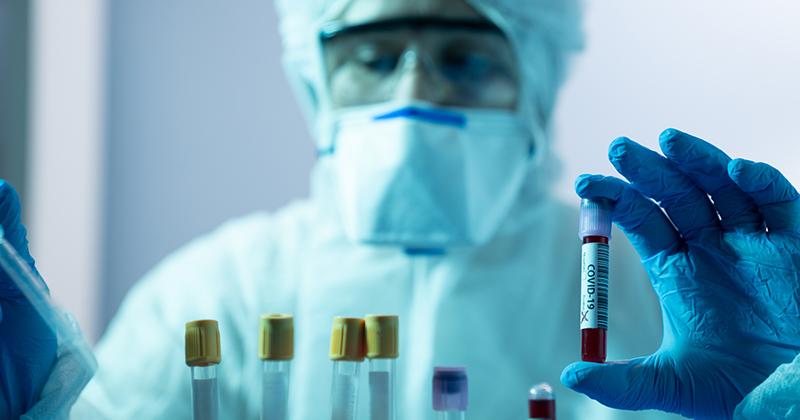Authored by Steve Watson via Summit News,
A scientific study in Australia has found that SARS-CoV-2, the coronavirus that has led to a pandemic, was likely created in a lab, barring some “remarkable coincidence” that led to the virus naturally evolving to be optimised to attack human cells.
The study was led by Nikolai Petrovsky, a vaccine researcher at Flinders University. The scientists in his team discovered that the coronavirus is optimized for penetration into human cells, rather than animal cells, which means that the theory that it emerged from an animal market and jumped to humans naturally is unlikely.
Lifesite News reports that the scientists “used a version of the novel coronavirus collected in the earliest days of the outbreak and applied computer models to test its capacity to bind to certain cell receptor enzymes, called “ACE2,” that allow the virus to infect human and animal cells to varying degrees of efficacy.”
“They found that “the novel coronavirus most powerfully binds with human ACE2, and with variously lesser degrees of effectiveness with animal versions of the receptor.”
The authors believe this means that the virus “became specialized for human cell penetration by living previously in human cells, quite possibly in a laboratory.”
The Study notes that “a virus would be expected to have highest affinity for the receptor in its original host species, e.g. bat, with a lower initial binding affinity for the receptor of any new host, e.g. humans. However, in this case, the affinity of SARS-CoV-2 is higher for humans than for the putative original host species, bats, or for any potential intermediary host species.”
It continues, noting that a “possibility which still cannot be excluded is that SARSCoV-2 was created by a recombination event that occurred inadvertently or consciously in a laboratory handling coronaviruses, with the new virus then accidentally released into the local human population.”
Dr Petrovsky added in a statement that, rather than being rapidly genetically spliced and mutated, the virus shows signs of being ‘cultured’ to evolve over time.
“Our and other analyses of the genomic sequence of the virus do not reveal any artificial gene inserts that would be the hallmark of a gene jockey, genetic engineers who manipulate or even create viruses by splicing in artificial inserts into their genome.” Petrovsky said.
“These are generally easily recognisable and hence clear signatures of human intervention in the creation of a virus. The fact that these artificial inserts are not present has been interpreted by some to mean this virus is not the result of human manipulation.” he added.
“However, this logic is incorrect as there are other ways in which humans can manipulate viruses and that is caused by natural selection,” he continued, adding that “you can force [a] bat virus to adapt to infect human cells via mutations in its spike protein,” after culturing it for a few years.
“The result of these experiments, according to the doctor, would be “a virus that is highly virulent in humans but is sufficiently different that it no longer resembles the original bat virus.”
If all of this sounds familiar, it is because this is exactly what the scientists inside the Wuhan Institute of Virology were doing with bat borne coronaviruses.
From Live Science:
The WIV lab, along with researchers in the U.S. and Switzerland, showed in 2015 the scary-good capability of bat coronaviruses to thrive in human cells. In that paper, which was published in 2015 in the journal Nature Medicine, they described how they had created a chimeric SARS-like virus out of the surface spike protein of a coronavirus found in horseshoe bats, called SHC014, and the backbone of a SARS virus that could be grown in mice. The idea was to look at the potential of coronaviruses circulating in bat populations to infect humans. In a lab dish, the chimeric coronavirus could infect and replicate in primary human airway cells; the virus also was able to infect lung cells in mice.
That study was met with some pushback from researchers who considered the risk of that kind of research to outweigh the benefits. Simon Wain-Hobson, a virologist at the Pasteur Institute in Paris, was one of those scientists. Wain-Hobson emphasizeda the fact that this chimeric virus “grows remarkably well” in human cells, adding that “If the virus escaped, nobody could predict the trajectory,” Nature News reported.
In an email to LifeSite, Dr Petrovsky said that his study suggests that “there are some highly unusual features, including optimal human adaptation, that in the absence of identification of a close to identical virus in an animal population from which COVID19 could have arisen, would point in the direction of human intervention at some point in the evolution of COVID19.”
He added that scientists have been unable to find any evidence of this coronavirus strain present in animals, which would support the natural evolution theory.
“If an animal vector and virus could be found then of course this would resolve the matter completely,” Petrovsky noted, adding
“One would have thought that the Chinese would be intensively sampling all conceivable animals trying to find such a virus to exonerate their labs. If no such intense search is going on (which I don’t know one way or the other) then the inference could be that they are not looking because they already know what they might find.”
“Whilst the facts cannot be known at this time, the nature of this event and its proximity to a high-risk biosecurity facility at the epicentre of the outbreak demands a full and independent international enquiry to ascertain whether a virus of this kind of COVID-19 was being cultured in the facility and might have been accidentally released,” Petrovsky concluded.
